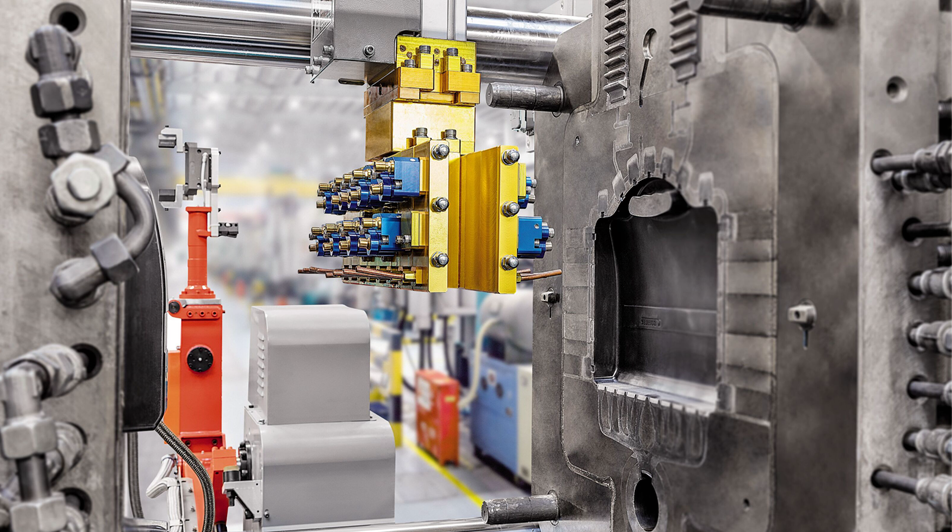Introduction:
High pressure die casting is a widely used manufacturing process for producing complex and precise metal parts. It involves injecting molten metal into a steel mold under high pressure, followed by solidification and ejection of the part. Quality engineering plays a crucial role in ensuring the production of high-quality die cast products. This article explores the various aspects of quality engineering and its contribution to innovating high pressure die casting products.
1. Understanding the Importance of Quality Engineering:
Quality engineering is the systematic approach to ensuring that products and processes meet or exceed customer expectations. In the high pressure die casting industry, quality engineering plays a vital role in delivering defect-free parts with consistent quality. It helps in identifying and resolving potential issues during the design and manufacturing stages, reducing costs, and improving customer satisfaction.
2. Design for Quality:
Design for quality is a fundamental principle of quality engineering in high pressure die casting. It involves considering quality aspects during the design phase, such as material selection, part geometry, and mold design. By choosing the right materials and optimizing part geometry, potential defects like porosity and shrinkage can be minimized. Proper mold design ensures the production of parts with precise dimensions and minimal distortion.
3. Process Control and Monitoring:
Quality engineering emphasizes process control and monitoring to ensure consistent production of high-quality die cast parts. It involves implementing statistical process control techniques to monitor key process parameters such as melt temperature, injection pressure, and mold temperature. By maintaining tight process controls, manufacturers can reduce variations and defects, resulting in improved product quality and reliability.
4. Inspection and Testing:
Inspection and testing are integral parts of quality engineering in high pressure die casting. Various non-destructive and destructive testing methods are employed to detect and eliminate defects. Non-destructive testing techniques like X-ray radiography and ultrasonic testing help identify internal defects such as porosity and cracks. Destructive testing methods like tensile testing and hardness testing provide valuable insights into the mechanical properties of the cast parts.
5. Continuous Improvement:
Continuous improvement is a key principle of quality engineering. It involves analyzing data, identifying areas for improvement, and implementing corrective actions. By collecting and analyzing data from various stages of the die casting process, manufacturers can identify trends and patterns that indicate potential issues. Continuous improvement efforts lead to enhanced process efficiency, reduced defects, and increased customer satisfaction.

6. Innovation in High Pressure Die Casting:
Quality engineering plays a significant role in driving innovation in high pressure die casting. By integrating advanced technologies and techniques, manufacturers can push the boundaries of what is possible in terms of part complexity, dimensional accuracy, and surface finish. Innovations like vacuum-assisted die casting, simulation software, and real-time monitoring systems contribute to the development of high-performance die cast products.
Conclusion:
Quality engineering is crucial for producing high-quality high pressure die casting products. It encompasses various aspects, including design for quality, process control, inspection and testing, continuous improvement, and innovation. By adopting a holistic approach to quality engineering, manufacturers can achieve defect-free parts, reduce costs, and exceed customer expectations. As the demand for high-quality die cast products continues to grow, investing in quality engineering becomes imperative for staying competitive in the industry.
-

- OEM die casting components for automotive Seat frame
-

- المكونات المعدنية لخدمة صب يموت OEM من ماك بوك الأوسط
-

- Magnesium alloy die-casting Auto parts RDM housing
-

- Magnesium alloy bike parts & componenets for kid’s push bike
-

- قطع غيار ومكونات لشوكة تعليق الدراجات لـ MTB
-

- سبائك المغنيسيوم Thixomolding السلطة الخليط الإسكان

 0086-750-5616188
0086-750-5616188 +86 13392089688
+86 13392089688 sales@zhongmei-tech.com
sales@zhongmei-tech.com







